CarEdge saved me over 4,500 dollars on a brand new Honda Pilot. I can't say thank you enough.
Price intelligence
Find a wide range of vehicle listings with market insights on new and used listings near you.


Help us personalize your CarEdge experience — it only takes a second.
Your answers help us personalize your CarEdge journey — we’ll follow up with tips and next steps that match your buying timeline.

Purchasing a vehicle is a significant investment, and understanding your potential monthly car payments is crucial to ensure it fits within your budget. One of the best ways to estimate your payments is by using a car payment calculator. With a plethora of options available, CarEdge’s tool stands out as an ultimate car payment calculator that is both user-friendly and reliable, and never sells your data to third parties. This article will guide you on using this top-ranking calculator, discuss the importance of understanding your monthly payments, and explain the factors that influence your car loan payments.
Just here for the calculator? No problem. Calculate your monthly car payment here.
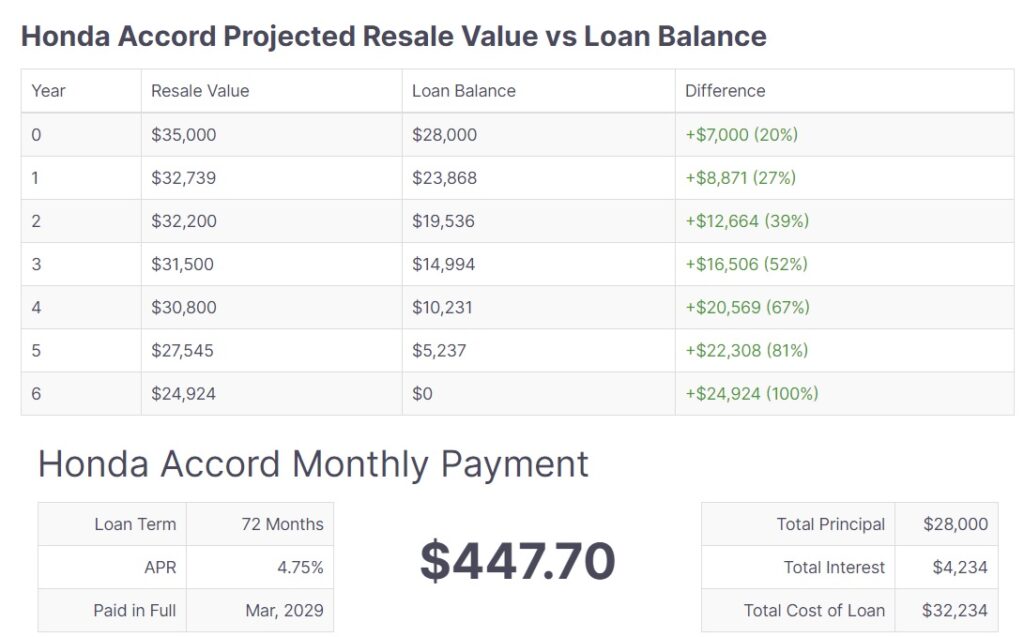
A reliable car payment calculator is an indispensable tool for potential car buyers. It helps you gauge whether a specific vehicle is affordable and prevents you from overextending your finances. While dealer salespeople may encourage you to focus solely on monthly payments, it’s essential to consider the overall price of the vehicle, interest rate, and loan term as well. This comprehensive approach ensures you make well-rounded decisions and avoid deceptive sales tactics that could cost you more in the long run.
Your monthly car loan payments depend on three primary factors:
The loan amount is the cost of the vehicle minus any down payment or trade-in value. The interest rate, determined by your credit score and market rates, represents the percentage charged by the lender for borrowing money. Lastly, the loan term refers to the duration of the loan, typically expressed in months or years. Balancing these factors helps you find the right car loan for your financial situation.
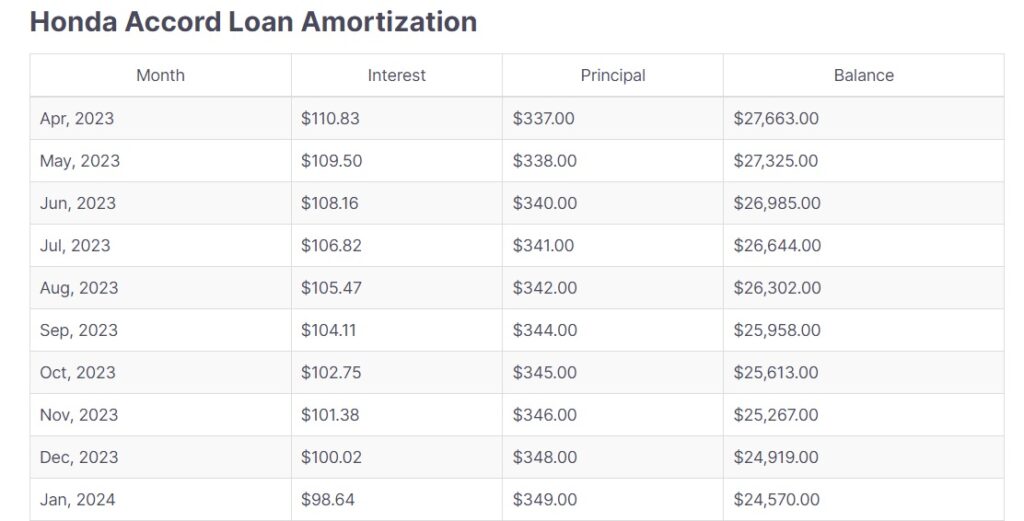
Car loan amortization is the process of breaking down the loan repayment into equal monthly installments over the loan term. It allows borrowers to understand how each payment contributes to the principal and interest components of the loan. In the initial phase of the loan term, a larger portion of the monthly payment goes towards interest, while a smaller portion is allocated to the principal. As the loan progresses, the interest component decreases, and the principal component increases, eventually leading to the loan’s full repayment. The CarEdge Car Payment Calculator shows your full amortization schedule, so you know exactly where your money is going.
Simplify your financing with one calculator that takes into account the loan amount, interest rate, and loan term to provide you with an accurate estimate. Plus, see resale value projections too!
Here’s how it works:
By following these simple steps, you can quickly and accurately estimate your monthly car payments and make informed decisions when purchasing a vehicle.
Visit caredge.com/financing to access the ultimate car payment calculator
Keep in mind that while monthly payments are an essential factor, they should not be the sole consideration when purchasing a vehicle. It’s crucial to account for the overall price, interest rate, and loan term to make the best decision possible.
CarEdge’s top-ranking car payment calculator simplifies the process of estimating your monthly payments, providing an accurate and user-friendly interface. By using this powerful tool, you can confidently navigate the car-buying process and find a vehicle that meets both your needs and financial requirements.

When you’re buying a car, one of the biggest decisions you need to make is how much money to put down. The down payment you make can have a significant impact on your monthly car payment, interest rate, and the overall cost of your loan. In this article, we’ll provide expert advice from CarEdge’s Ray Shefska and break down everything you need to know about choosing the right down payment for your budget.

The down payment is the initial payment you make on a car, and it has a significant impact on the overall cost of your car. In this section, we’ll discuss the reasons why the down payment matters, including how it affects your monthly payments, interest rates, and loan terms.
CarEdge’s Ray Shefska shared this wisdom and advice: “I think that in today’s market the minimum down payment should be 20% of the total out-the-door price and if possible, upwards of 30%. That way, you have at least covered your taxes, tags, and doc fees, with some applied to the principal. Even with 20% down, I think that it still makes sense to look at GAP insurance, especially on a used car or a new car with a market adjustment.”
The credit bureau Experian says a 20% down payment might help shield you from depreciation. Depreciation refers to the ever-shrinking value of your car. The value of a new car declines about 20% in just the first year. Try out our depreciation calculator for the make and model you’re in the market for.
What does that look like in a real world example? It depends on the price of the car you’re thinking about buying. A 20% down payment for a $20,000 car is $4,000, but a 20% payment for a $60,000 car is $12,000. The monthly payments for each of these scenarios would be vastly different, despite having the same down payment percentage. More on that later.
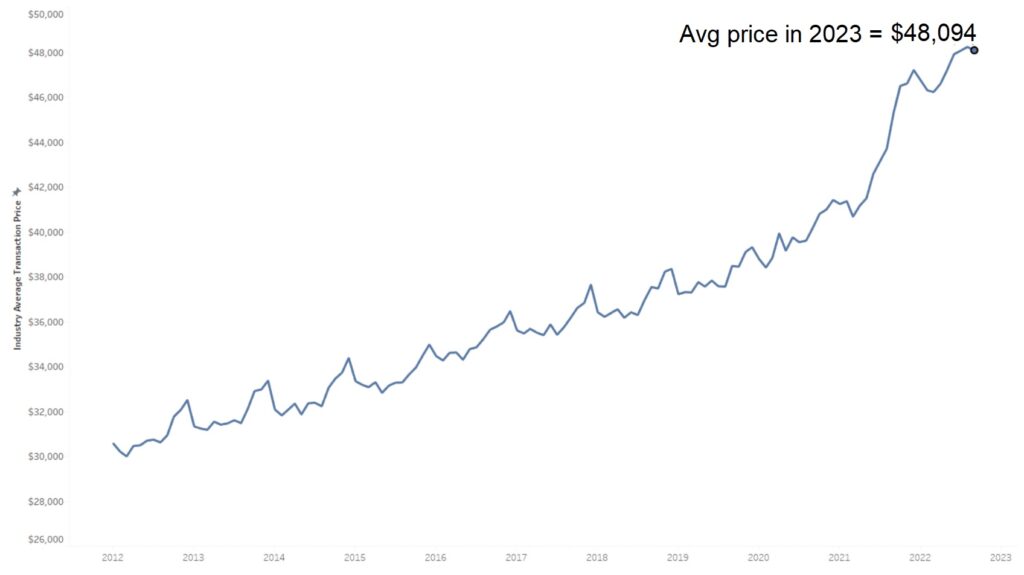
The average down payment on a car varies depending on whether it’s a new or used car. We’ll look at the latest data to see what the average down payment is today. We’ll also discuss why putting down a larger down payment can help protect you from depreciation.
In 2022, the average down payment on a new vehicle was just over $6,000, according to Edmunds. This is an increase of 27 percent from 2021, and is the highest it has ever been. The average down payment on used vehicles was $3,574 in 2022. For both new and used cars, the average down payment in 2022 was far below the recommended 20%. This partly explains why the average monthly payment for a new car is above $700/month in 2023. Over 15% of new car buyers pay over $1,000 a month, not including insurance or fuel.
The down payment amount can have a significant impact on financing. A larger down payment lowers the amount financed, which means a lower monthly payment and less interest paid over the life of the loan. It can also reduce the risk of being upside down on the loan. You don’t want to be end up owing more than the car is worth. On the other hand, a smaller down payment may lead to higher monthly payments and more interest paid over the life of the loan. It’s important to find the right balance between a down payment that fits your budget and financing that makes sense for you.
Auto loan rates are at a 14-year high. When your loan has a higher interest rate, you will avoid hundreds or even thousands of dollars in interest payments by making a larger down payment. Another option is to refinance to a lower rate as soon as possible. In many cases, by putting a few hundred more dollars down today, you’re saving much more in interest over the loan term.
According to the latest data from NerdWallet, the average auto loan rate in March 2023 is 6.07% for new cars and 10.26% for used cars. Borrowers with low credit scores qualify for even higher auto loan rates.
To better understand how your down payment affects your monthly car payments, we’ve created a table based on a used SUV priced at $35,000. Use this table as a guide to help you make an informed decision when buying a car and choosing a down payment amount.
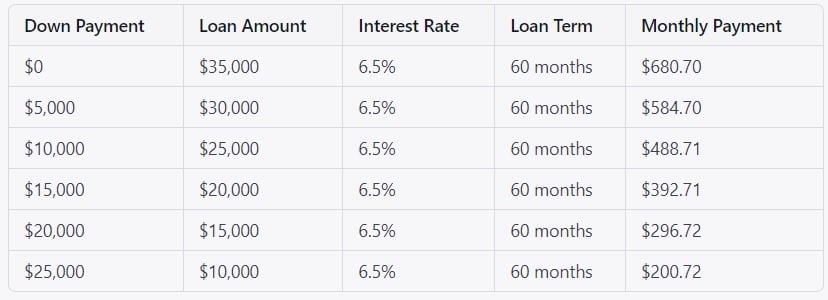
You can see that with a higher down payment, your loan amount decreases, and your monthly payment drops substantially.
What about interest? If you finance the FULL $35,000 in this example, you’d pay $6,088 in total interest over 60 months. However, if you put $10,000 down, you’re paying $4,300 in interest. The numbers don’t lie: a higher down payment will save you in the long run.
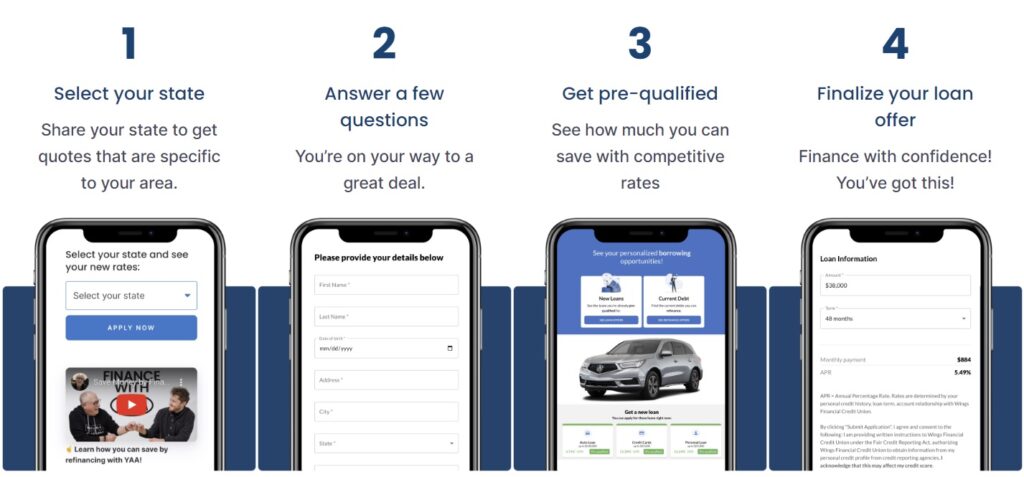
Why should you finance with a credit union? Credit unions offer the best rates, helping you save money for years to come. They offer lower rates than banks, have no hidden fees, and are known for their personal approach to customer service. Work with a CarEdge-approved credit union for the best rates. Drive your dream car at a rate you can afford.
We’ve got tools that empower you to make smarter car buying decisions. From the industry’s best car buying data package to CarEdge Concierge, we’ve got options to suit every driver and budget. CarEdge Coaches are here to help guide you through the car buying process. Our team of expert coaches is dedicated to providing personalized advice and support to help you save money and avoid costly mistakes. With CarEdge Coach, you’ll have access to one-on-one guidance from experienced professionals who understand the car buying process inside and out. Prefer a DIY experience? CarEdge Data is the perfect toolkit for you. Whether you have questions about financing options, down payment amounts, or negotiating with a dealership, we’re here to help you make informed decisions and achieve your car buying goals.

At CarEdge, we understand that car insurance can be a complicated and confusing topic. With so many variables and factors at play, it’s hard to know exactly how much you should be paying for car insurance. That’s why we’re here to help break down the average cost of car insurance in 2023 and what factors may impact your rates. We’ll also look at why car insurance rates are rising so fast.
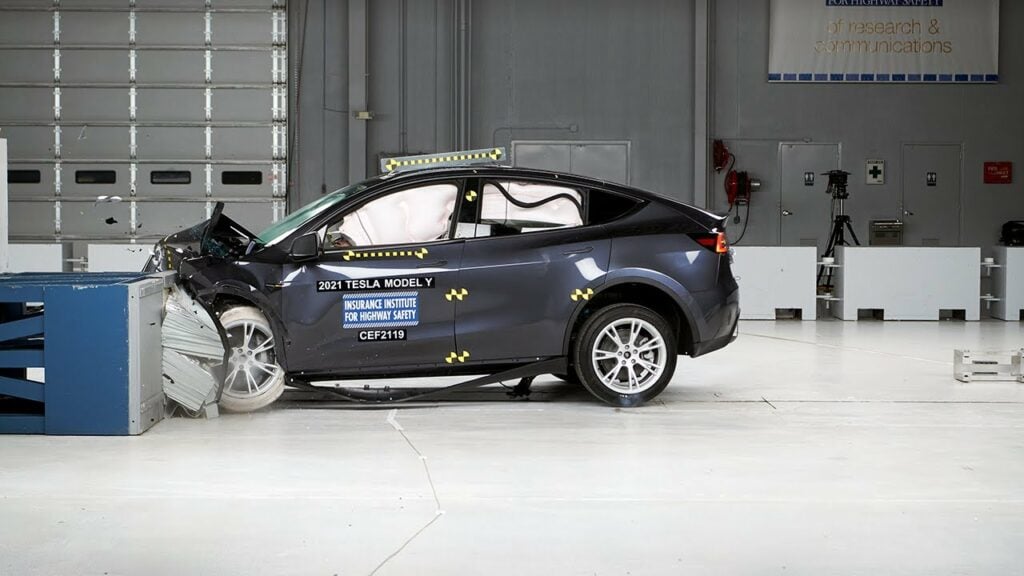
According to NerdWallet’s 2023 rate analysis, the national average cost of car insurance has risen to $2,148 per year, or roughly $179 per month for full coverage insurance. However, it’s important to note that these are just averages, and your personal car insurance rate may vary based on several factors.
Factors that may impact your car insurance rates include your driving history, location, the type of coverage you select, and the make and model of your car. For example, if you have a poor driving record or a recent DUI, you can expect to pay more for car insurance than someone with a clean driving record and good credit.
To get an accurate quote for your specific situation, we encourage you to compare car insurance rates for free with CarEdge. In fact, 76% of drivers who shop around find a lower rate for the same coverage. So why not take a few minutes to see if you could be saving money on car insurance?
Take control of your car insurance costs and compare quotes for free with CarEdge today!
Despite a slight cooling in inflation, auto insurance prices are surging. How much have car insurance rates risen? Rates are up nearly 15% over the past year. A new report by Bankrate found that nationwide, premiums have risen more than $240 on average, topping $2,000 a year. Florida drivers saw the biggest jump, up nearly twice that amount to almost $3,200 a year. The higher cost of car insurance comes as supply chain issues are starting to ease, but the spike in repair costs is still driving insurance rates up across the board.
Insurance companies are fighting tooth and nail to spend less on claims. Claims tied up in court are one of the major driving forces for rising car premiums. “Most claims that are going through to the carriers are coming in with an attorney,” said Anakarina Callejas, an insurance agent at GreatFlorida who spoke to CBS News. “So, maybe a claim that could have been closed off rather quickly is now tied up in court, with higher and higher and higher expenses.” Those expenses are ultimately passed down to consumers.
Let’s take a closer look at how different factors may impact your car insurance rates.

Your driving history is one of the biggest factors that can impact your car insurance rates. If you have a clean driving record with no accidents or violations, you can expect to pay less for car insurance than someone with a history of accidents or tickets.
For example, a good driver with good credit can expect to pay an average of $2,148 per year for full coverage insurance. However, if you have an at-fault accident on your record, that price could jump to $3,164 per year. And if you have a recent DUI on your record, you can expect to pay even more, with an average cost of $3,933 per year for full coverage insurance, according to NerdWallet.

Your location can also impact your car insurance rates. If you live in a densely populated area with a high rate of accidents or thefts, you can expect to pay more for car insurance than someone who lives in a rural area.
For example, if you live in a city with a high rate of car thefts, your comprehensive insurance may be higher than someone who lives in a low-theft area. It’s important to consider these factors when you decide to shop around for better rates.
The type of coverage you select can also impact your car insurance rates. Full coverage insurance, which includes liability, comprehensive, collision, and additional insurance required by your state, is generally more expensive than minimum coverage insurance.
For example, a good driver with good credit can expect to pay an average of $685 per year for minimum coverage insurance, compared to $2,148 per year for full coverage insurance. However, it’s important to note that minimum coverage insurance may not provide enough protection in the event of an accident, so it’s important to consider your individual needs when selecting the right coverage.
Finally, the make and model of your car can also impact your car insurance rates. We covered this in detail in a recent blog. Cars that are more expensive to repair or that have a high rate of theft may be more expensive to insure than cars that are less expensive to repair or have a lower theft rate.
For example, if you have a luxury car or a sports car, you can expect to pay more for car insurance than someone with a more modest vehicle. It’s important to consider these factors when selecting a car to purchase.
These Are the Most and Least Expensive Cars to Insure
Several personal factors can impact your car insurance rates. Let’s break down some of the most common factors:
Driving Record: Your driving history is a key factor in determining your car insurance rate. If you have a clean driving record, meaning no accidents, DUIs, or other traffic violations, you can expect to pay less for car insurance than someone with a history of accidents or violations.
Credit Score: Your credit score can also impact your car insurance rate. Insurers use a credit-based insurance score to calculate rates in most states, which is similar to your regular credit score. If you have good credit, you can generally expect to pay less for car insurance than someone with poor credit.
Location: Where you live can also impact your car insurance rate. Insurance companies consider factors such as crime rates, population density, and weather patterns when setting rates for different regions. If you live in an area with a high crime rate or a lot of accidents, you can expect to pay more for car insurance than someone in a safer area.
Coverage Selection: The amount of coverage you select also affects your car insurance rate. If you opt for minimum coverage, you’ll pay less per month, but you’ll have less protection in the event of an accident. On the other hand, if you choose full coverage insurance, you’ll pay more per month, but you’ll have more protection in case of an accident.
Car Make and Model: The type of car you drive can also impact your car insurance rate. Cars that are more expensive to repair or replace can cost more to insure. For example, a sports car will generally cost more to insure than a sedan. These are the most and least expensive cars to insure today.
While some factors that affect your car insurance rates are out of your control, there are several things you can do to lower your rates:
Shop Around: Comparison shopping is one of the best ways to find a lower car insurance rate. CarEdge can help you compare quotes from multiple insurance providers for free, so you can find the best rate for the coverage you need. In fact, 76% of drivers who shop around find a lower rate for the same coverage.
Compare insurance quotes with expert help available (100% FREE)
Increase Your Deductible: Raising your deductible, or the amount you pay out of pocket in the event of an accident, can lower your monthly premium. However, make sure you can afford to pay the higher deductible if you need to file a claim.
Bundle Your Insurance: Many insurance companies offer discounts if you bundle your car insurance. You may want to bundle with homeowners or renters insurance.
Maintain a Good Credit Score: As mentioned earlier, your credit score can impact your car insurance rate. Maintaining a good credit score can help you qualify for lower rates.
Choose a Car That’s Cheaper to Insure: Before you buy a car, check with your insurance provider to see how much it will cost to insure. Choosing a car that’s cheaper to insure can help you save money on your car insurance rates. Check out the huge gap in insurance costs for new cars.
The national average cost of car insurance is $2,148 per year, according to NerdWallet’s 2023 rate analysis. However, your personal car insurance rate will vary based on several factors, including your driving history, location, coverage selection, and car make and model. By understanding these factors and taking steps to lower your rates, you can save money on car insurance without sacrificing the coverage you need.
Remember, comparing car insurance quotes is one of the best ways to find a lower rate. CarEdge can help you compare quotes from multiple providers for free, so you can find the best rate. Don’t overpay for car insurance – start comparing quotes today.

Buying a new car this year doesn’t mean you have to sacrifice safety for affordability. Check out these cars and SUVs that are not only surprisingly affordable, but also a Top Safety Pick by the Insurance Institute for Highway Safety. Without further ado, let’s take a look at the safest new cars in 2023.
Be sure to check out these other guides:
The Most and Least Negotiable Cars, Trucks and SUVs
Car Buying Cheat Sheet: Negotiate Like a Pro
Used Car Prices (Updated Weekly)

Starting MSRP
Fuel Economy
IIHS Safety Rating
The 2023 Acura Integra is a surprisingly affordable car with amazing fuel economy, and the highest safety ratings.
The 2023 Acura Integra is a 4-Door Sedan that is a perfect 5-seater choice for both single adults and families combined. Featuring a plethora of safety features, Acura outperformed in both crashworthiness and crash avoidance tests. It is no surprise that the IIHS awards its highest safety rating of Top Safety Pick + to this sleek beast. Acura Watch comes standard with this car and includes Collision Mitigation Braking System (CMBS), Road Departure Mitigation (RDM), Adaptive Cruise Control (ACC) and more. Finally, Acura’s Advanced Compatibility Engineering (ACE) body structure is next-level. The Integra has been carefully engineered to provide ultimate protection in the event of a frontal collision.

Starting MSRP
Fuel Economy
IIHS Safety Rating
The 2023 Lexus ES 350 is an affordable midsize luxury sedan with decent fuel economy and a high safety rating.
The 2023 Lexus ES 350 is a 4-Door Midsize Luxury Sedan that is super chic for those that want a perfect mix of style and comfort, without breaking the bank. This 5-seater, spicy-looking car also outdid itself when it comes to safety features. IIHS gave it a Top Safety Pick for many reasons, including its crashworthiness and crash avoidance and mitigation. Featuring Anti-Lock Brakes, Stability Control, Additional Airbags, and Seatbelt Pretensioners, this beast was designed not just for your personal comfort but also your safety.

Starting MSRP
Fuel Economy
IIHS Safety Rating
The 2023 Hyundai Sonata is a reasonably priced midsize sedan with good fuel economy and also a high safety rating.
If you’re in the market for a midsize sedan that combines style, safety, and performance, the 2023 Hyundai Sonata is definitely worth considering. This vehicle boasts a sleek and modern design, as well as a range of advanced safety features to ensure that you and your passengers are protected on the road. Being awarded the Top Safety Pick rating by IIHS can only be attributed to the 2023 Hyundai Sonata suite of safety technologies, including forward collision warning, automatic emergency braking, lane departure warning, and blind-spot monitoring. These features help you stay aware of your surroundings and avoid accidents, even in challenging driving conditions. In addition to its safety features, the Hyundai Sonata offers a comfortable and spacious interior, with plenty of legroom and headroom for both driver and passengers. This vehicle is fuel-efficient, making it a smart choice for daily commutes or long road trips.

Starting MSRP
Fuel Economy
IIHS Safety Rating
The 2023 Mazda 3 is an affordably priced car with amazing fuel economy and very high safety rating.
If you’re looking for a compact car that combines style and safety, look no further than the 2023 Mazda 3. An IIHS Top Safety Pick awarded winner, the 2023 Mazda 3 features advanced safety technology, which include blind-spot monitoring system, rear cross-traffic alert, and lane departure warning. Additionally, the car has a range of airbags and a reinforced body structure to keep you and your passengers safe in the event of an accident. Despite its compact size, the Mazda 3 is surprisingly spacious and comfortable inside, with ample legroom and headroom for both driver and passengers. Finally, the Mazda 3 is a joy to drive, with smooth handling and a responsive engine. Whether you’re navigating city streets or cruising down the highway, this car offers a comfortable and enjoyable driving experience.

Starting MSRP
Fuel Economy
IIHS Safety Rating
The 2023 Subaru Legacy is a reasonably priced car with standard all-wheel drive, and it’s one of the safest cars in 2023.
The 2023 Subaru Legacy is an award-winning midsize sedan that offers a winning combination of safety, reliability, and fuel efficiency. The vehicle has been named an IIHS 2023 Top Safety Pick, thanks to its advanced safety features and sturdy design. Equipped with Brake Assist, Brake Override System, Blind Spot Detection, Lane Change Assist, Rear Cross-Traffic Alert, a Rear Vision Camera, a collapsible steering column, and a Vehicle Dynamics Control system, the Legacy is designed to keep you and your passengers safe on the road..

Starting MSRP
Fuel Economy
IIHS Safety Rating
The 2023 Volvo XC90 is a midsize luxury SUV with decent fuel economy and the highest safety rating.
The 2023 Volvo XC90 is a luxurious and stylish SUV that is sure to turn heads on the road. One of the standout features of the 2023 Volvo XC90 is its advanced safety technologies that earned it IIHS Top Safety Pick + rating, which include automatic emergency braking, lane departure warning, and blind-spot monitoring. The vehicle also features a reinforced body structure and a range of airbags to ensure that you and your passengers are protected in the event of an accident. In addition to its safety features, the Volvo XC90 offers a comfortable and spacious interior, with plenty of legroom and headroom for both driver and passengers. The vehicle is also equipped with a range of premium amenities, including leather upholstery, a panoramic sunroof, and a state-of-the-art infotainment system. Overall, the 2023 Volvo XC90 is an excellent choice for anyone looking for a luxurious, safe, and enjoyable SUV.
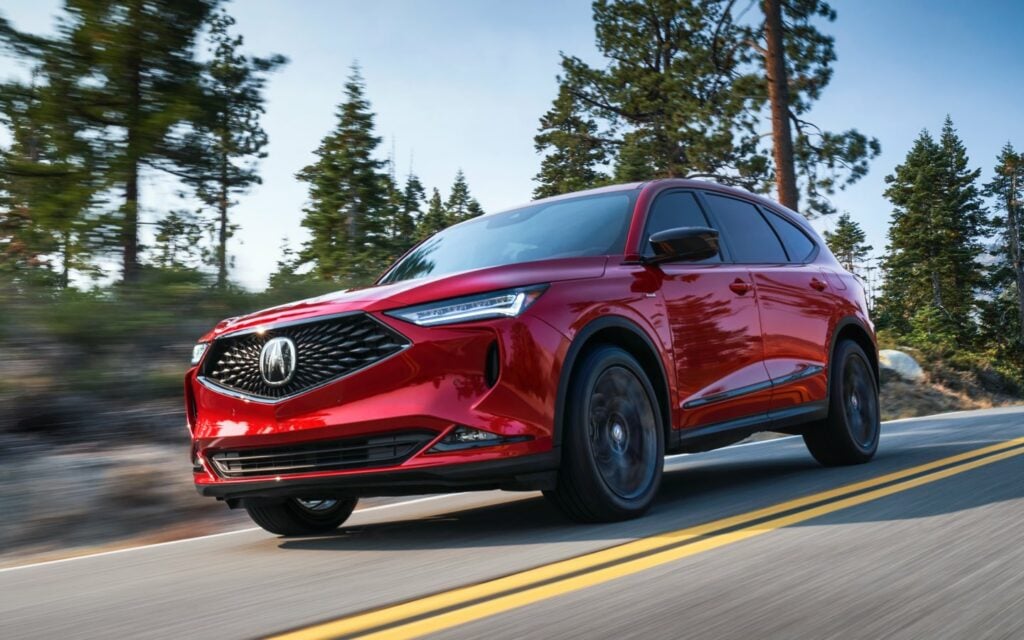
Starting MSRP
Fuel Economy
IIHS Safety Rating
The 2023 Acura MDX is an affordable luxury SUV with good fuel economy and the highest safety rating.
The 2023 Acura MDX is a luxurious and spacious SUV. This vehicle boasts a range of advanced safety features, including the latest driver assistance technologies, making it one of the safest SUVs on the market. The 2023 Acura MDX has been named an IIHS Top Safety Pick+, which is the highest safety rating awarded by the organization. The vehicle features advanced safety technologies such as automatic emergency braking, lane departure warning, and blind-spot monitoring. Additionally, a reinforced body structure and advanced airbags provide protection in the event of an accident. In addition to its advanced safety features, the Acura MDX offers a comfortable and spacious interior, with plenty of legroom and headroom for both driver and passengers. Whether you’re navigating city streets or cruising on the highway, this car offers a comfortable and enjoyable driving experience.
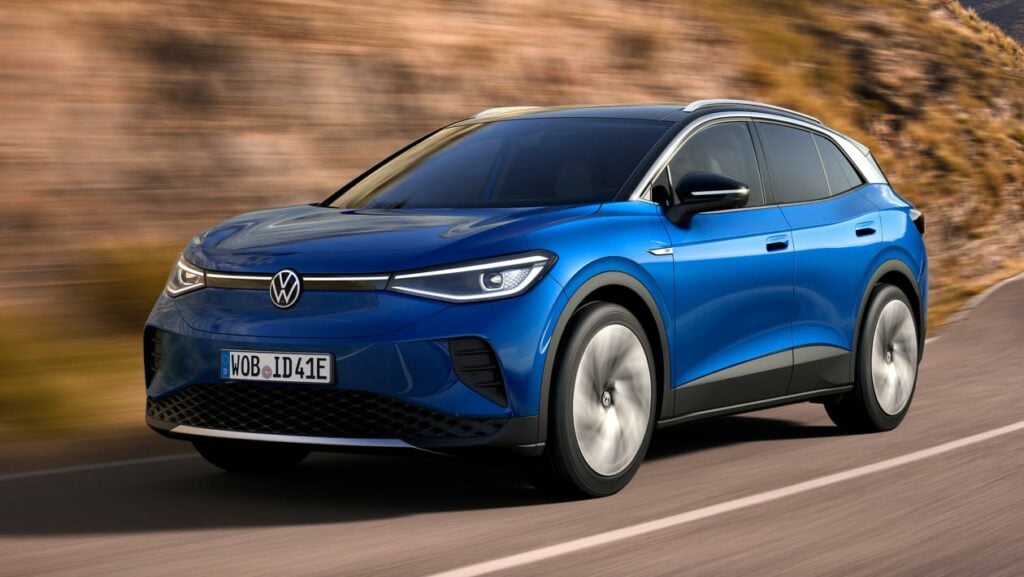
Starting MSRP
Fuel Economy
IIHS Safety Rating
The 2023 Volkswagen ID.4 is an affordable midsize luxury electric SUV with amazing fuel economy and the highest safety rating.
The 2023 Volkswagen ID.4 is an all-electric SUV that is designed to provide a safe, comfortable, and environmentally friendly driving experience. The vehicle features advanced safety technologies, making it one of the safest SUVs on the market, earning an IIHS Top Safety Pick+ rating. With automatic emergency braking, lane departure warning, and blind-spot monitoring, the Volkswagen ID.4 is ready to help you stay safe and avoid accidents. Additionally, the vehicle’s reinforced body structure and range of airbags provide additional protection for you and your passengers in the event of a collision. The Volkswagen ID.4 is powered by an electric motor, which provides instant torque and a smooth, quiet driving experience. Additionally, range is sufficient with up to 275 miles on a charge. Better yet, charging speeds have improved for the 2023 model year.

Starting MSRP
Fuel Economy
IIHS Safety Rating
The 2023 Hyundai Palisade is a reasonably priced midsize luxury SUV with decent fuel economy and, it’s one of the safest new cars in 2023.
The 2023 Hyundai Palisade boasts a range of advanced safety features, including the latest driver assistance technologies, earning it an IIHS Top Safety Pick+ rating. Equipped with automatic emergency braking, lane departure warning, and blind-spot monitoring, the Hyundai Palisade is designed to help you stay safe and avoid accidents. Additionally, the vehicle’s sturdy design and a range of airbags provide additional protection for you and your passengers in the event of a collision. The vehicle is has a range of premium amenities, including leather upholstery, a panoramic sunroof, and a state-of-the-art infotainment system. The Hyundai Palisade features a robust V6 engine that provides plenty of power and a smooth, comfortable driving experience.
In conclusion, prioritizing safety when purchasing a new vehicle is essential for protecting yourself and your loved ones on the road. With the wide variety of top-rated safest cars in 2023, there’s no need to compromise on affordability or fuel efficiency. To make the smartest buying decision, turn to CarEdge for comprehensive information and expert guidance on the best vehicles for your needs. Our platform offers valuable insights, comparisons, and in-depth reviews to help you confidently choose the perfect car that combines safety, performance, and value. Let CarEdge be your trusted partner in finding the ideal vehicle for a secure and enjoyable driving experience.

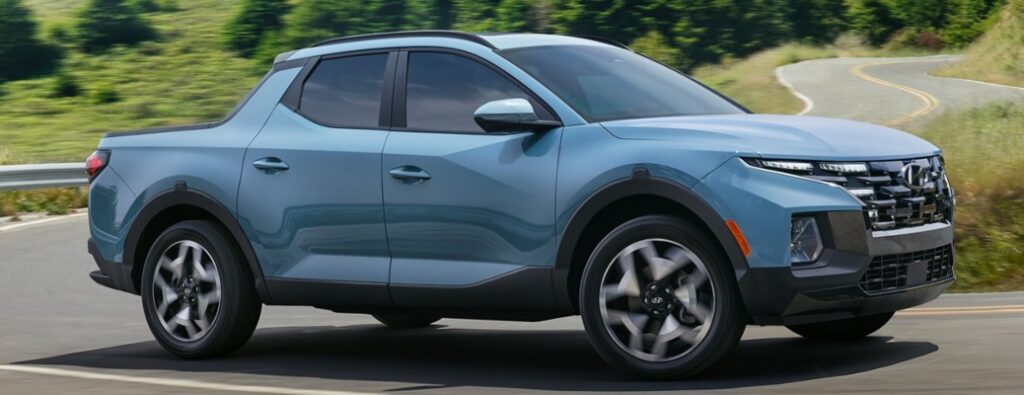
Hyundai Motor America and the NHTSA have issued a Hyundai recall for nearly 568,000 pickups and crossovers in the U.S. with potentially faulty trailer harness modules, posing a fire risk. The affected vehicles include 2019-23 Santa Fe midsize crossovers, 2021-23 hybrids, 2022-23 plug-in hybrids, and 2022-23 Santa Cruz compact pickups. Owners are advised to park their vehicles outside and away from structures until repairs are completed.
On March 23, Hyundai and the U.S. NHTSA issued a recall notice that immediately impacted over half a million vehicles. These vehicles may be equipped with an accessory tow hitch assembly available for purchase through Hyundai or a dealership. Water accumulation on the tow hitch harness module printed circuit board (PCB) could cause an electrical short, leading to a fire. Hyundai has reported six incidents potentially related to this faulty component in the U.S., including one fire report and five reports of thermal damage isolated to the trailer harness module. No confirmed crashes or injuries have been associated with the issue.
The tow hitch module and wiring harness are manufactured by Korean auto supplier Segi. As an interim repair, dealers will inspect the module and remove the fuse as necessary. When the final repair is available, dealers will install a new fuse and wire extension kit. Dealers and owners will be notified starting May 16.
See if your vehicle is included in this recall with Hyundai’s VIN checker.
This year, Hyundai has issued six recalls affecting over 843,000 U.S. vehicles, according to NHTSA data. Kia America, a sibling company, is also recalling about 3,500 Carnival minivans for the same issue, with no reported fires, injuries, crashes, or deaths. The tow hitch harness supplier for Kia vehicles is Mobis Parts America.

This Hyundai recall follows millions of vehicles recalled in 2022 due to a separate fire risk. Previously, Hyundai and Kia owners began suing the automakers in 2015 after they refused to pay for repairs or replacements of the Theta II engine. Unsurprisingly, Hyundai eventually settled the class-action suit.
The plaintiffs in the lawsuit alleged that the Class Vehicles suffered from a defect that could cause engine seizure, stalling, engine failure, and engine fire. They also claimed that engine seizure or stalling could be dangerous if experienced and that some owners and lessees had been improperly denied repairs under the vehicle’s warranty. HMA and HMC denied the plaintiffs’ allegations.
The affected “Class Vehicles” included 2011–2019 model year Hyundai Sonata, 2013–2019 model year Hyundai Santa Fe Sport, and 2014–2015 and 2018–2019 model year Hyundai Tucson equipped with 2.0 liter and 2.4 liter genuine Theta II gasoline direct injection engines within OEM specifications.
In early 2023, an additional 2.1 million vehicles were included in a Hyundai and Kia class action settlement. While the previous settlement covered vehicles equipped with Theta II gasoline direct injection (GDI) engines, a more recent settlement aims to resolve several cases that claimed the automakers’ Theta II 2.4-liter multipoint fuel injection (MPI), 1.6-liter Gamma GDI and 2.0-liter Nu GDI engines are plagued by the same defect, which can allegedly cause engine seizures, failures and even fires.
Learn more about the new 2023 additions to the Hyundai and Kia class action settlement here.
The latest Hyundai recall affecting nearly 568,000 vehicles in the U.S. highlights the importance of addressing potential fire risks in vehicles. Owners of affected Santa Fe and Santa Cruz models are advised to park their vehicles outside and away from structures until necessary repairs are completed. Hyundai’s history with recalls and class-action settlements underscores the need for automakers to prioritize safety and customer satisfaction. Owners should stay informed about any recalls and take appropriate action to ensure their vehicles are safe and well-maintained.
Be sure to check if your vehicle is included in this Hyundai recall at Hyundai’s official recall checker.